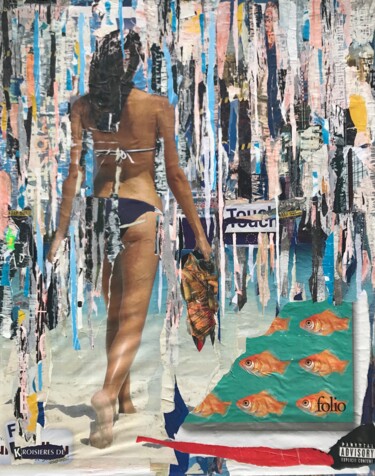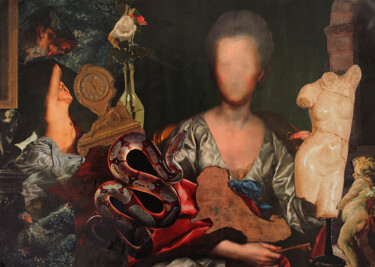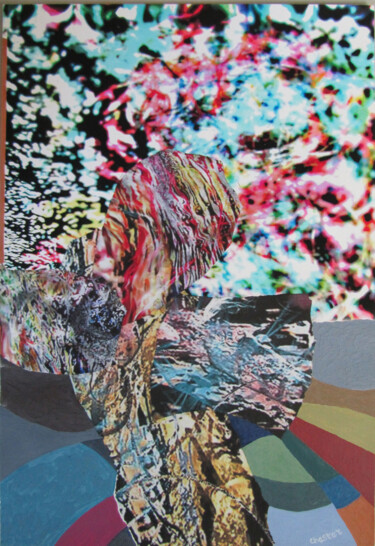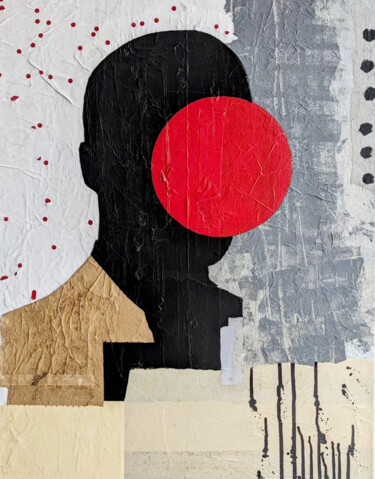
155 原始拼贴画出售:
你在找出售原始拼贴画吗?
探索艺术拼贴的所有风格和技巧:当代艺术、街头艺术、抽象艺术、具象艺术、风景、肖像...... ArtMajeur 解决所有艺术敏感性并在您身边庆祝美 20 年,超过 360 万件当代艺术作品发现...或获取!当代拼贴画的世界标杆。发现来自世界各地的当代艺术家的作品,用一流的方式装饰您的室内!单纯的艺术爱好者还是公认的收藏家?找到最喜欢的画布或绘画,真正增强您的装饰效果。 ArtMajeur 为您提供世界上最优秀的当代艺术家的原创作品、限量版和艺术版画。在 ArtMajeur 上,拼贴作品由艺术市场的爱好者和专家挑选。我们为您精选时尚、屡获殊荣的知名艺术家的原创作品以及当代艺术领域的新兴价值,为您在线购买艺术拼贴画提供指导和帮助。
Discover contemporary History Collages on ArtMajeur
Contemporary History Collages are a form of original artwork that intertwine various historical, cultural, and political themes. These collages are constructed using a range of supports, including canvas, paper, and wood, and incorporate materials such as photographs, newspaper cutouts, and pieces of fabric. What makes these collages unique is the way they bring together disparate elements to create a cohesive whole that tells a story or evokes a particular emotion. Each collage is a reflection of the artist’s perspective on the world, and can offer a powerful commentary on the issues that shape our lives. Through the use of layered imagery and symbolism, contemporary History Collages invite viewers to reflect on the past, present, and future, and to consider our place within the larger narrative of human experience.

©2024 Chiara Criniti
Origins and History
Contemporary History Collages have their roots in the early 20th century when artists began to experiment with collage techniques. The Dada movement, which emerged in the aftermath of World War I, was particularly influential in the development of this art form. The use of found objects, newspaper clippings, and other everyday materials allowed artists to create new meaning out of the chaos of modern life. The Surrealists also embraced collage as a means of exploring the unconscious mind. In the 1950s and 60s, Pop artists like Richard Hamilton and Robert Rauschenberg further popularized the technique. Today, contemporary artists continue to push the boundaries of collage, incorporating digital imagery and other new technologies into their work. The use of found materials and the juxtaposition of disparate imagery remains a hallmark of this dynamic and ever-evolving art form.

©2013 Leni Smoragdova
Evolutions of theses works in the contemporary art market
Contemporary History Collages have recently undergone a significant evolution, reflecting the complexity and diversity of contemporary society. These collages use a variety of materials, including photographs, found objects, and paint, to create visually striking and emotionally charged compositions. The use of collages allows artists to explore themes related to identity, memory, and social justice, among others. They offer a powerful commentary on the world we live in, raising important questions about our past, present, and future. As a result, these collages have become increasingly important in the contemporary art market, attracting the attention of collectors and art enthusiasts alike. They offer a unique perspective on the world, one that is both thought-provoking and visually stunning.

©2024 Bad
Related Famous Artists
Contemporary artists who have made a name for themselves with their work about modern history collages include Jeff Koons, John Baldessari, and Barbara Kruger.
Jeff Koons, famous for his sculptures and paintings, has also dabbled in the realm of collage. His pieces often feature pop culture references and bright, bold colors. Koons’ work is known for its playfulness and ability to comment on the consumer culture of modern America.
John Baldessari, on the other hand, is a conceptual artist who often incorporates text into his collages. His pieces often focus on the intersection of art and language, questioning the role of each in our understanding of the world around us. Baldessari’s work is known for its dry humor and intellectual depth.
Barbara Kruger is a feminist artist who uses text and images to comment on the power dynamics of contemporary society. Her collages often feature bold, black and white text layered over images from advertisements or other media. Kruger’s work is known for its biting critique of consumer culture and its role in shaping our understanding of gender and power.
These artists all share an interest in using collage to comment on contemporary history, whether it be through pop culture references, intellectual inquiry, or feminist critique. Their work challenges us to think critically about the world we live in and the cultural forces that shape it.
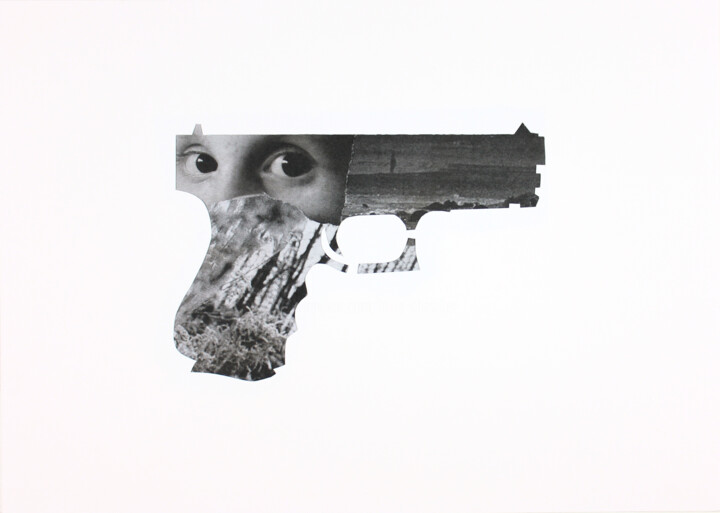
©2024 Ln Le Cheviller
Notable contemporary History Collages
One of the well-known contemporary history collages is "Untitled (Your Body is a Battleground)" by American artist Barbara Kruger, created in 1989. This artwork features a black and white photograph of a woman’s face with the words "Your Body is a Battleground" written in bold, red letters across her face. The piece was created as a response to the reproductive rights movement in the United States during the 1980s.
Another notable contemporary history collage is "I Want a President" by American artist Zoe Leonard, created in 1992. This artwork is a series of black and white photographs and text that call for a new kind of leader - one who represents marginalized communities and fights for social justice. The artwork was initially created as part of an AIDS advocacy campaign in New York City.
A third example of a contemporary history collage is "The Dinner Party" by American artist Judy Chicago, created between 1974 and 1979. This artwork is a large-scale installation comprised of a triangular table with place settings for 39 important women throughout history. Each place setting features a unique plate that pays homage to the woman it represents. The artwork was created as a tribute to the often-overlooked contributions of women to history and society.
Overall, contemporary history collages serve as powerful reflections of the social and political issues of their time, and continue to inspire and provoke viewers today.

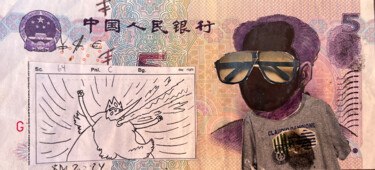
Leni Smoragdova
拼贴在纸上 | 2.4x5.1 in
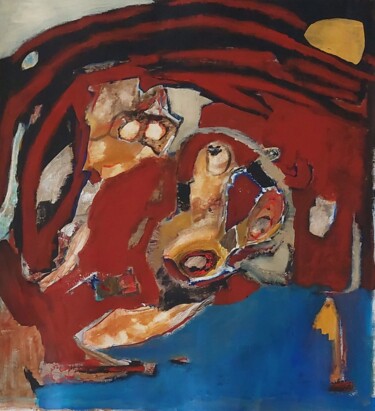
Monique Morellec
拼贴在帆布上 | 26.8x26.8 in
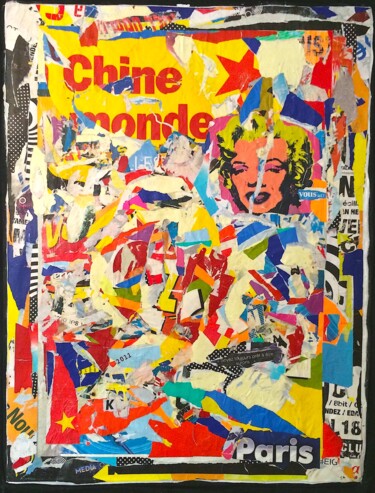
Kerkhove Kerkhove (DomKcollage)
拼贴在布上 | 65x47.2 in

Leni Smoragdova
拼贴在纸上 | 2.4x5.1 in

Nelly Sanchez
拼贴在纸板上 | 16.5x11.8 in
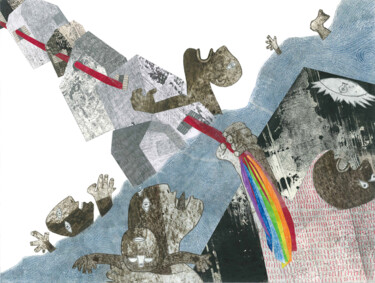
Chiara Criniti
拼贴在纸上 | 12.2x16.1 in
